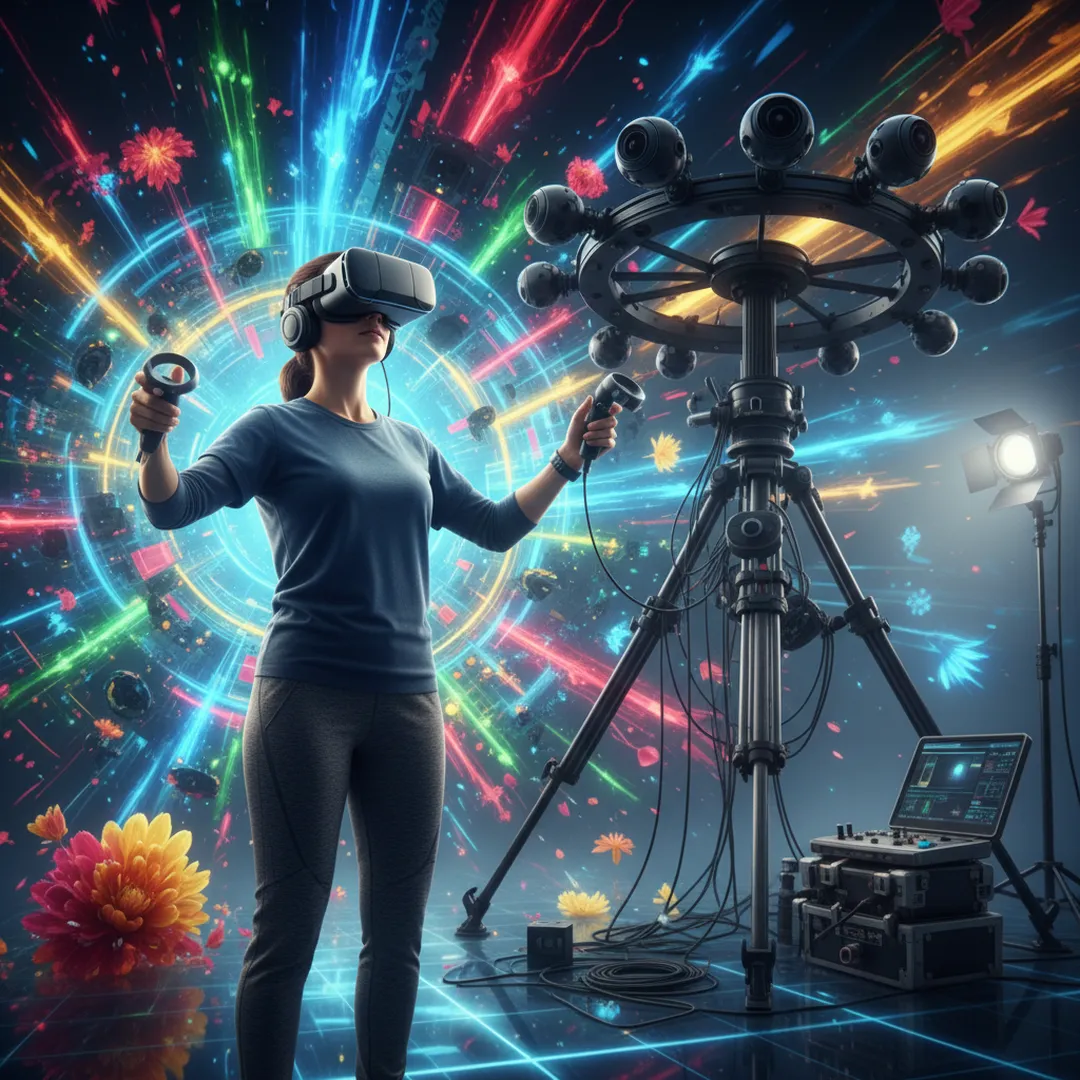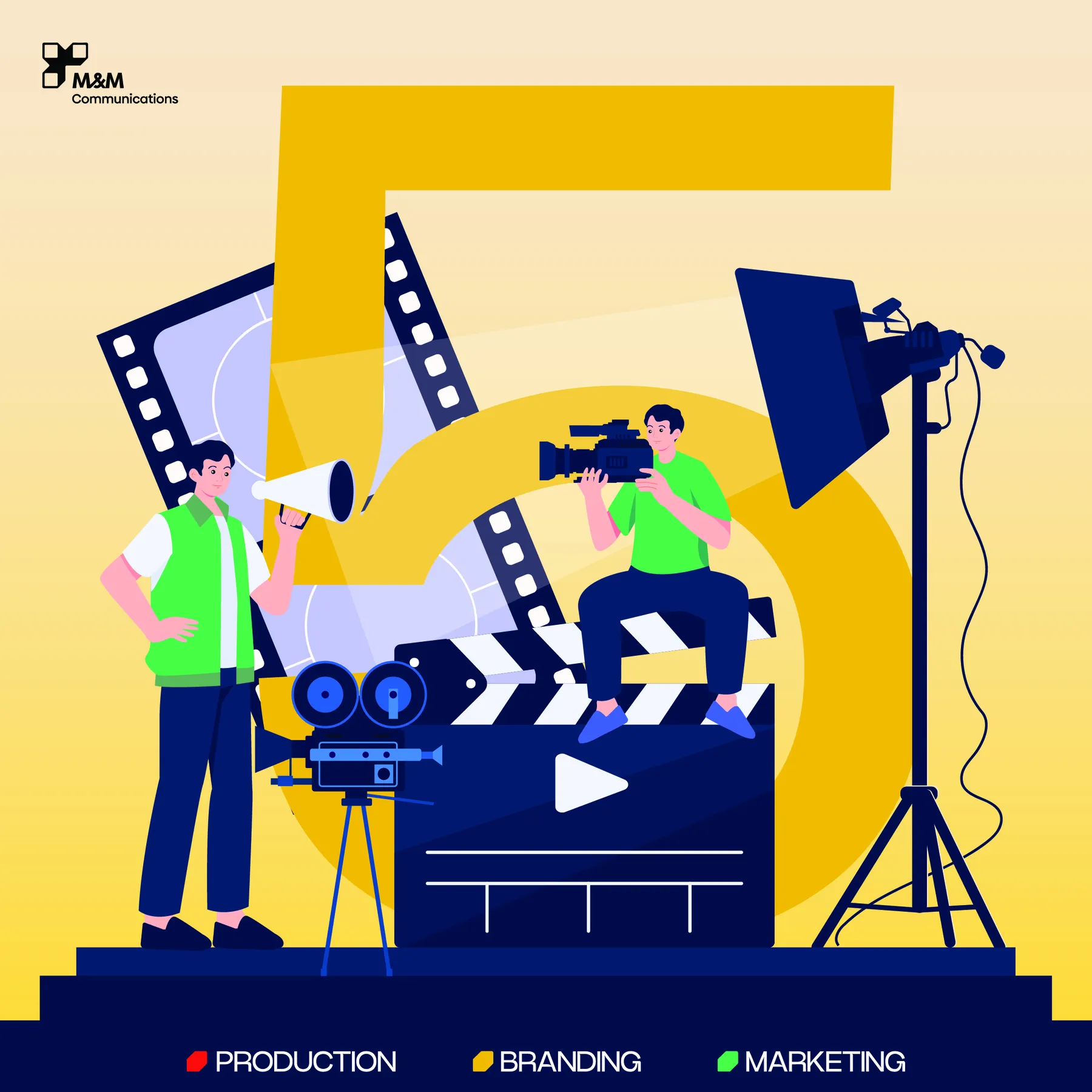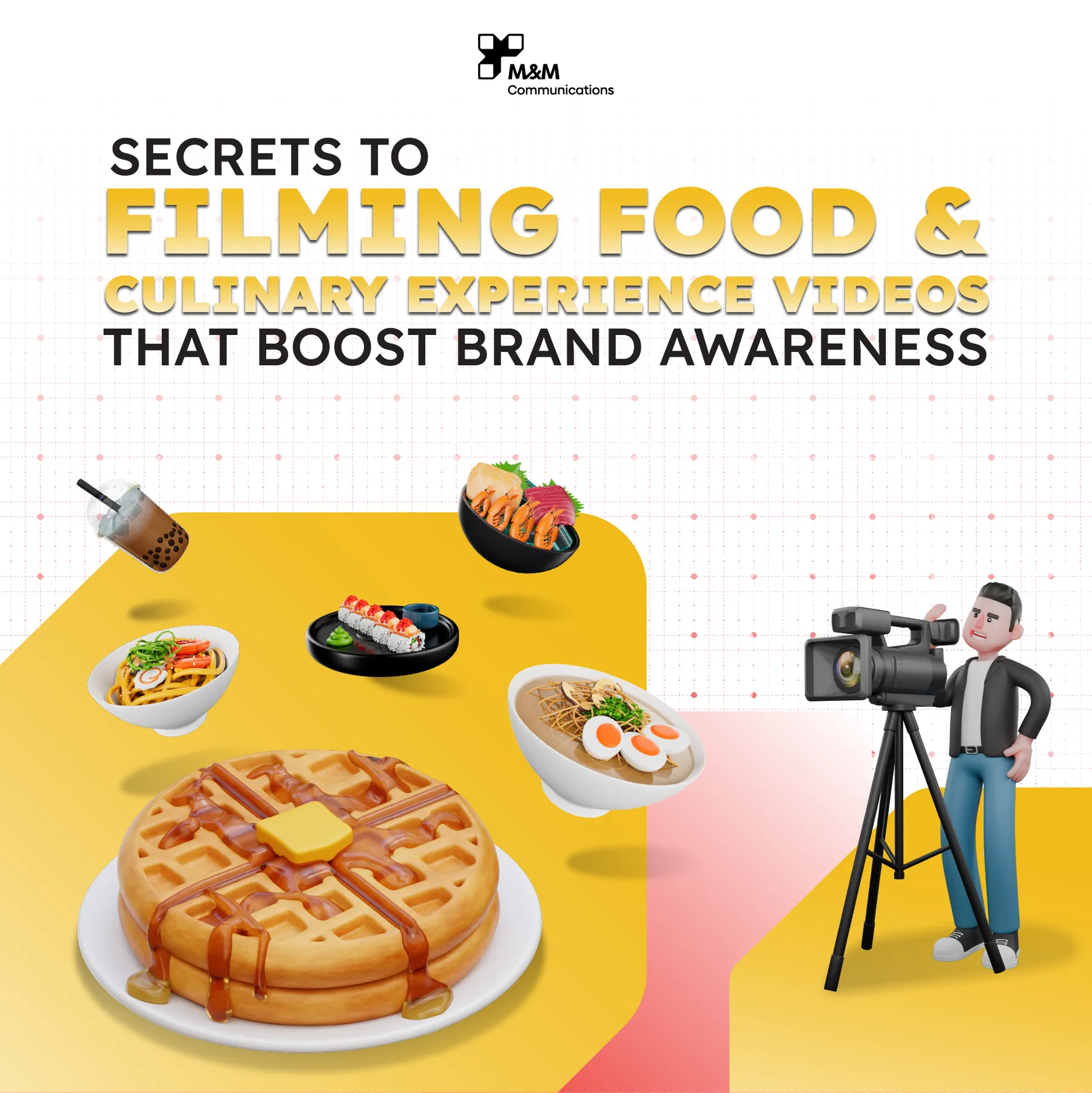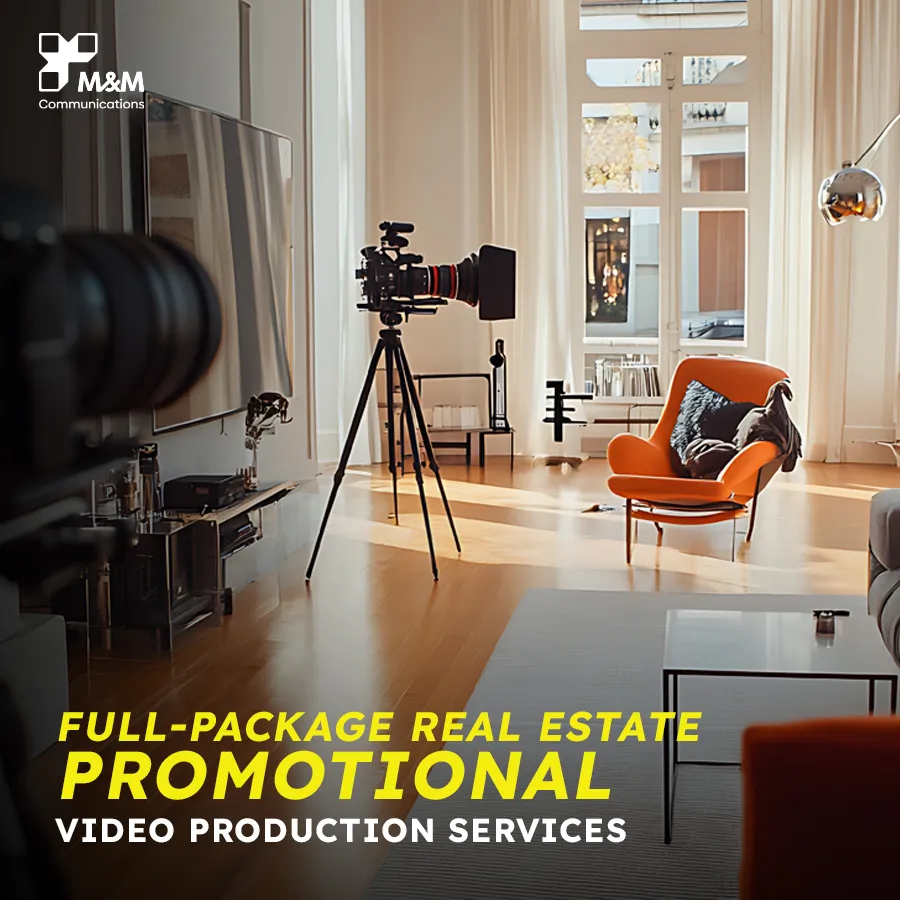
Video 360 and VR Marketing 2025: Complete Guide to Immersive Content Strategy
The Immersive Revolution: Why 360-Degree Video and VR Marketing Matter in 2025
The future of marketing isn't just about showing your product—it's about immersing your audience in an experience they'll never forget. 360-degree video and virtual reality (VR) marketing represent the frontier of customer engagement, transforming passive viewers into active participants in your brand story.
At M&M Communications, we've witnessed firsthand how immersive technologies revolutionize the way brands connect with audiences. From virtual property tours that sell million-dollar homes to 360-degree event coverage that transports remote viewers into the heart of the action, these technologies aren't just impressive—they're increasingly essential for brands that want to stand out in an oversaturated digital landscape.
Understanding 360-Degree Video Technology: The Technical Foundation
360-degree video, also known as immersive video or spherical video, captures a complete view of the environment in every direction simultaneously. Unlike traditional video that shows a fixed frame, 360 video allows viewers to control their perspective, looking up, down, left, right, and even behind the camera position.
How 360 Video Capture Works
The magic of 360 video lies in multiple cameras recording simultaneously from different angles. These individual feeds are then 'stitched' together using specialized software to create a seamless spherical video experience. The quality of this stitching process—minimizing visible seams and maintaining consistent exposure across different camera feeds—separates professional 360 content from amateur attempts.
The Pepper's Ghost Effect and Immersive Illusions
While not strictly 360 technology, Pepper's Ghost—a theatrical illusion technique dating back to the 19th century—has found new life in modern immersive marketing. This optical illusion uses angled glass and strategic lighting to create seemingly three-dimensional projections that appear to float in space. When combined with 360 video technology, it creates truly unforgettable brand experiences for product launches, trade shows, and experiential marketing campaigns.
Essential Equipment for 360 Video Production
Entry-Level 360 Cameras (Under $500)
Insta360 ONE X3: The industry standard for accessible 360 video. Captures 5.7K 360-degree video with exceptional stabilization, intuitive mobile app control, and invisible selfie stick technology that removes the mounting pole from footage. Perfect for social media content, real estate tours, and event coverage.
Ricoh Theta Z1: Compact design with impressive image quality thanks to its 1-inch sensor. Ideal for quick 360 captures and live streaming applications. The small form factor makes it perfect for travel content and behind-the-scenes marketing materials.
Professional 360 Cameras ($500-$5,000)
GoPro MAX: Rugged, waterproof design with exceptional stabilization. Can shoot traditional action camera footage or full 360 video. The versatility makes it valuable for adventure brands, tourism marketing, and outdoor event coverage.
Insta360 Pro 2: Professional-grade 8K 360 capture with interchangeable lenses and advanced color grading capabilities. Used for high-end commercial projects, branded content, and cinematic VR experiences.
Enterprise-Level Solutions ($5,000+)
Kandao Obsidian: 8K 360-degree 3D capture with real-time stitching capabilities. Professional productions requiring broadcast quality and minimal post-production workflow.
Nokia OZO: Cinema-grade 360 video with spatial audio capture. Film productions, high-budget commercial work, and premium VR content creation.
Content Creation Workflow: From Concept to Delivery
Pre-Production Planning
360 video requires different thinking than traditional cinematography. Because the camera captures everything, you can't have crew members, lighting equipment, or other production elements visible in frame. This necessitates careful planning:
Location Scouting: Identify spaces that are visually interesting from all angles, not just one perfect viewpoint. Look for environments with natural lighting or practical light sources that won't require visible equipment.
Narrative Structure: Unlike linear video where you control exactly what the viewer sees, 360 content requires designing experiences where viewers explore on their own. Create points of interest throughout the sphere to guide attention without forcing it.
Audio Planning: Spatial audio—sound that changes based on where the viewer is looking—enhances immersion dramatically. Plan your audio capture strategy as carefully as your visual composition.
Production Best Practices
Camera Placement: Position the camera at eye level (around 5-6 feet) for most natural viewing. Higher or lower placements create dramatic effects but can feel disorienting.
Movement and Stabilization: Slow, deliberate camera movements work best. Fast pans or sudden movements that work in traditional video can cause motion sickness in 360 content. Use motorized sliders, drones, or vehicle mounts for smooth motion.
Talent Direction: Actors or subjects should engage with the full sphere, not just one camera position. Encourage natural movement and interaction with the environment rather than performing to a single lens.
Post-Production and Stitching Software
Insta360 Studio: Free software optimized for Insta360 cameras. Automatic stitching with minimal user input required. Great for quick turnaround projects and social media content.
Adobe Premiere Pro with VR Workflow: Professional editing with advanced color correction, effects, and precise stitching control. Essential for commercial projects requiring broadcast quality.
Mistika VR: Industry-leading stitching software with advanced tools for challenging footage scenarios—moving subjects, different lighting conditions, or difficult parallax issues.
Spatial Audio Creation
Spatial audio transforms 360 video from impressive to truly immersive. When viewers turn their head and the audio source position changes realistically, the brain accepts the virtual environment as authentic.
Ambisonic Microphones: Capture sound from all directions simultaneously. The Zoom H3-VR or Sennheiser AMBEO VR Mic provide professional spatial audio capture.
Audio Post-Production: Use specialized software like Facebook 360 Spatial Workstation or Resonance Audio to mix spatial audio that responds correctly to viewer head movement.
Platform Distribution: Where to Share Your 360 Content
YouTube 360
The most accessible platform for 360 video distribution. Over 2 billion users can access your content without specialized equipment. Viewers can explore 360 video using mouse/finger swipe on desktop/mobile, or full VR experience through Google Cardboard or other headsets.
Optimization tips: Use 4K minimum resolution (8K preferred). Include clear instructions in the first few seconds about how to interact. Add engaging thumbnails that communicate the immersive nature of the content.
Facebook 360
Native 360 video support with massive reach. Facebook's algorithm favors 360 content, often providing more organic reach than traditional posts. Particularly effective for event coverage, behind-the-scenes content, and experiential marketing.
Best practices: Keep videos under 10 minutes for optimal engagement. Use captions (85% of Facebook video is watched without sound). Post during peak engagement hours for your audience.
Oculus Platform
Meta's dedicated VR content platform reaches serious VR enthusiasts with high-end equipment. Perfect for premium branded experiences, virtual showrooms, or cinematic VR content that justifies headset usage.
Technical requirements: Higher production values expected. Minimum 4K per eye for stereoscopic content. Spatial audio essential. Longer-form content performs better than quick clips.
Marketing Use Cases: Strategic Applications of 360 Video
Virtual Tours and Real Estate Marketing
360 video revolutionizes property marketing by allowing potential buyers to experience spaces remotely. Unlike static 360 photos, video tours can showcase flow between rooms, highlight features through motion, and include narration that guides viewers through the space.
ROI impact: Real estate listings with 360 tours receive 300% more inquiries and reduce time-to-sale by an average of 31%. Buyers arrive at viewings already familiar with the property, making them more qualified prospects.
Product Demonstrations and Virtual Showrooms
Allow customers to explore products from every angle, examining details that would be impossible in traditional video. Particularly effective for complex products—vehicles, machinery, technology—where understanding the full context matters.
Automotive industry: Virtual test drives combining 360 video with spatial audio create realistic experiences of being inside vehicles, showcasing features, cabin noise levels, and visibility without requiring showroom visits.
Event Coverage and Experiential Marketing
Transport remote viewers into the heart of conferences, product launches, concerts, or brand activations. 360 event coverage extends the impact far beyond physical attendees, creating FOMO (fear of missing out) that drives future attendance.
Strategic advantage: Event 360 content continues providing value long after the event concludes, serving as evergreen marketing material that showcases your brand's experiential capabilities.
Travel and Tourism Destination Marketing
Inspire wanderlust by transporting potential travelers to destinations before they book. 360 tours of hotels, attractions, and experiences reduce booking anxiety by showing exactly what to expect.
Conversion impact: Tourism boards using 360 video in campaigns report 45% higher conversion rates from consideration to booking compared to traditional video marketing.
Training and Educational Content
Immersive training scenarios increase knowledge retention by 75% compared to traditional video instruction. Allow employees or customers to practice procedures in safe virtual environments before real-world application.
Virtual Reality: The Next Level of Immersion
While 360 video can be viewed on any device, true VR experiences require headsets that track head movement and position, creating complete immersion. The distinction matters for marketing strategy.
Mobile VR (Accessible Tier)
Google Cardboard and similar solutions turn smartphones into basic VR devices. Low barrier to entry makes this perfect for mass-market campaigns where you can distribute inexpensive viewers with your branding.
Standalone VR (Mid-Tier)
Meta Quest 3, PICO 4, and similar standalone headsets don't require phones or computers. Growing installed base makes this the sweet spot for branded VR content targeting early adopters and tech-savvy demographics.
PC VR (Premium Tier)
High-end experiences through Valve Index, HTC Vive Pro, or Meta Quest Pro connected to powerful computers. Exceptional quality but limited audience. Best for trade show installations, retail experiences, or ultra-premium brand positioning.
Production Workflow and Best Practices
Pre-Production Checklist
- Define clear objectives: What should viewers feel and do after the experience?
- Choose appropriate technology level for your audience's access
- Scout locations with 360-degree visual interest
- Plan audio strategy (spatial audio dramatically increases impact)
- Create storyboards accounting for viewer agency (they control viewing direction)
- Identify talent who can perform naturally for omnidirectional capture
- Plan equipment rigging that won't appear in footage
Production Day Execution
- Arrive early to test stitching quality in actual location lighting
- Mark camera positions and talent marks outside the capture sphere
- Conduct test recordings to verify audio levels and sync
- Monitor stitching seams in real-time if equipment supports it
- Capture multiple takes (fixing 360 footage in post is extremely difficult)
- Record traditional B-roll for promotional use
- Maintain consistent exposure across the sphere (avoid dramatic lighting contrasts)
Post-Production Workflow
- Ingest and organize footage by scene and take
- Stitch footage using appropriate software for your camera system
- Color grade to maintain consistency across stitched elements
- Edit spatial audio to match visual content
- Add graphics, titles, or interactive elements carefully (they exist in 3D space)
- Export in platform-specific formats (each platform has different specifications)
- Quality control on actual VR headset before publishing
Cost Analysis and ROI Expectations
Equipment Investment
Entry Budget ($500-2,000): Consumer 360 camera, basic editing software, smartphone-based VR viewers for client distribution. Suitable for small businesses testing immersive content.
Professional Budget ($5,000-15,000): Professional 360 camera, spatial audio recorder, Adobe Creative Cloud subscription, standalone VR headset for quality control. Supports consistent content creation for marketing campaigns.
Enterprise Budget ($20,000+): Cinema-grade 360 rigs, professional stitching software, VR development platforms, multiple headset types for testing. In-house production capabilities for large organizations.
Production Costs Per Project
Basic 360 Video (1-2 minutes): $2,000-5,000 including pre-production planning, single-day shoot, editing, and platform optimization.
Professional 360 Experience (3-5 minutes): $8,000-20,000 with location scouting, talent, spatial audio production, interactive elements, and multi-platform distribution.
Premium VR Experience (10+ minutes): $30,000-100,000+ for fully-produced narrative VR content with CGI elements, professional actors, and custom VR application development.
ROI Measurement
Track these metrics to justify 360/VR marketing investment:
- Engagement time: 360 content averages 5-8x longer viewing duration than traditional video
- Completion rates: Immersive content sees 65-85% completion vs 35-45% for standard video
- Lead quality: Prospects who engage with VR experiences show 3x higher purchase intent
- Social amplification: 360 content receives 2-4x more shares than equivalent traditional posts
- Brand recall: VR experiences generate 70% higher brand recall vs traditional advertising
Emerging Trends in 360 and VR Marketing
WebVR and Browser-Based Experiences
VR experiences accessible through web browsers without app downloads remove friction from audience engagement. Technologies like WebXR enable sophisticated VR content delivered through simple URL links.
Volumetric Video Capture
Beyond 360 video, volumetric capture creates true 3D representations of people and objects that viewers can move around. This technology, used in productions like The Mandalorian, is becoming accessible for marketing applications.
AI-Enhanced 360 Video Production
Artificial intelligence now assists with automatic stitching, color matching, and even generating missing elements where footage gaps exist. This reduces production time and costs while improving quality.
Social VR Spaces
Platforms like Horizon Worlds and VRChat create shared social experiences where brands can create persistent virtual spaces for community building and product experiences.
Getting Started: Your 360/VR Marketing Action Plan
Month 1: Research and Planning
- Define marketing objectives suitable for immersive content
- Research your audience's VR/360 access and adoption
- Identify 2-3 pilot project concepts
- Set budget for equipment and production
- Benchmark competitor 360/VR initiatives
Month 2: Equipment and Skill Development
- Acquire appropriate camera equipment for your budget tier
- Complete online training in 360 production techniques
- Practice with test projects before client-facing content
- Establish editing workflow and software proficiency
- Build library of best practices and lessons learned
Month 3: Pilot Production and Testing
- Produce first 360 video marketing piece
- Test across multiple platforms and devices
- Gather audience feedback through surveys and analytics
- Measure performance against traditional content benchmarks
- Refine processes based on learnings
Ongoing: Scale and Optimize
- Develop content calendar incorporating regular 360 pieces
- Expand platform distribution based on performance data
- Experiment with interactive elements and branching narratives
- Build audience education around how to access and enjoy content
- Stay current with emerging technologies and techniques
Conclusion: Embracing the Immersive Future
360-degree video and VR marketing represent more than technological novelty—they're powerful tools for creating memorable brand experiences that drive measurable business results. As equipment becomes more affordable and audiences more familiar with immersive content, the competitive advantage belongs to brands that master these mediums now.
At M&M Communications, we don't just follow trends—we help businesses harness emerging technologies to tell inspirational stories that make customers not just buy, but stay through emotional connection. 360 and VR technologies amplify this mission by creating experiences that viewers feel rather than just watch.
The question isn't whether immersive marketing belongs in your strategy—it's whether you'll lead or follow as this revolution unfolds. Start experimenting with 360 video today, and discover how transporting your audience into your brand story transforms engagement, conversion, and loyalty.
Ready to explore how 360 video and VR can elevate your marketing strategy? Contact M&M Communications today. Call 0909 123 456 or email hello@mmcom.vn to discuss how immersive technologies can create unforgettable experiences for your brand.






